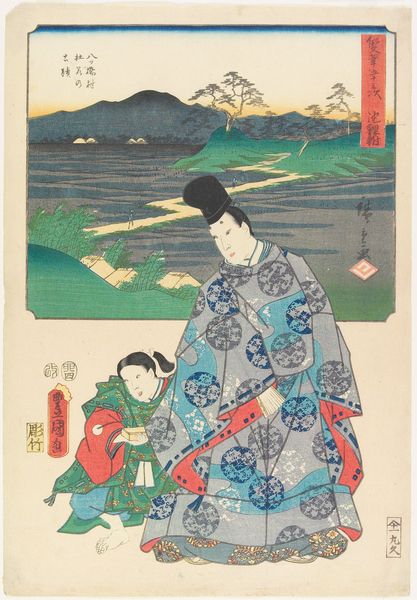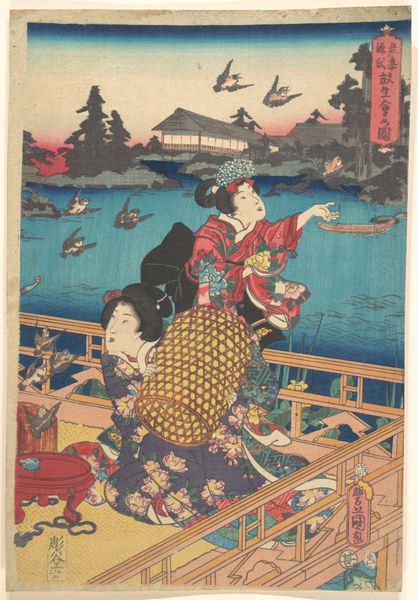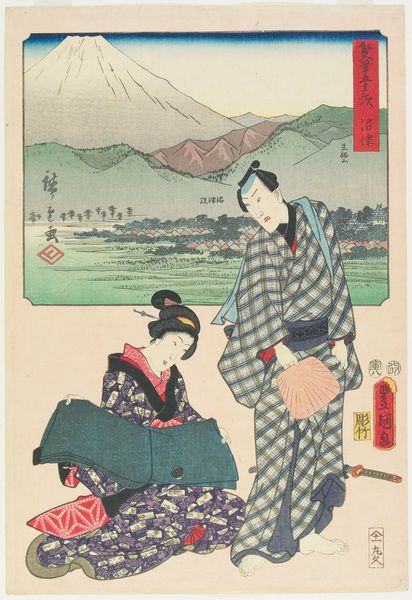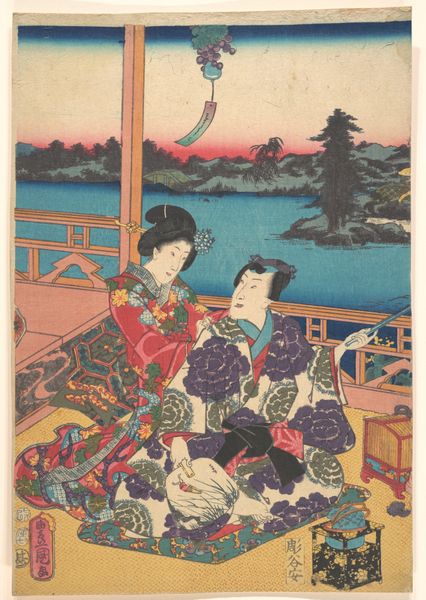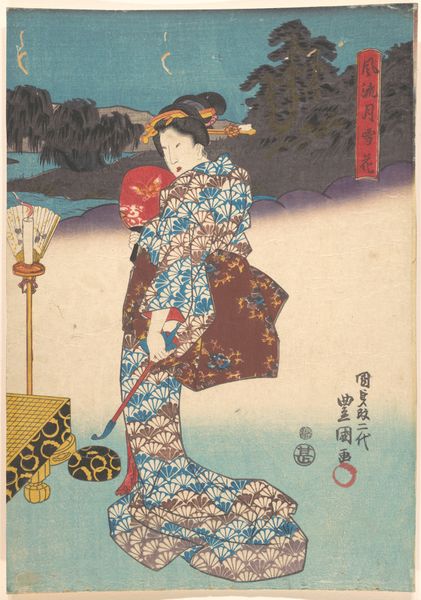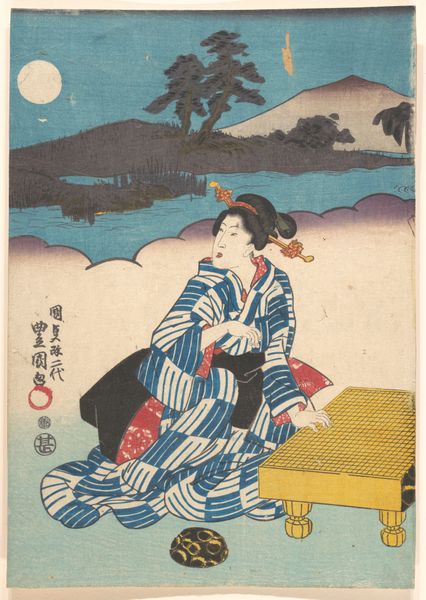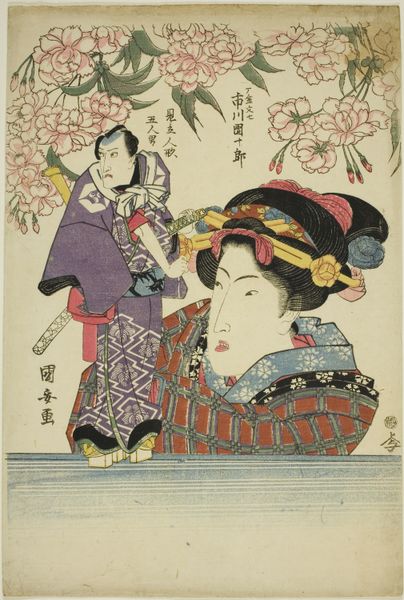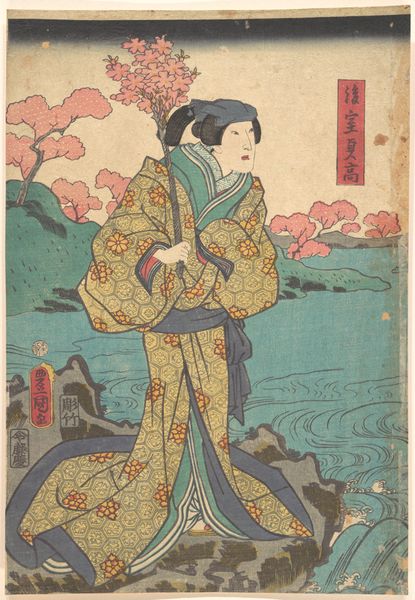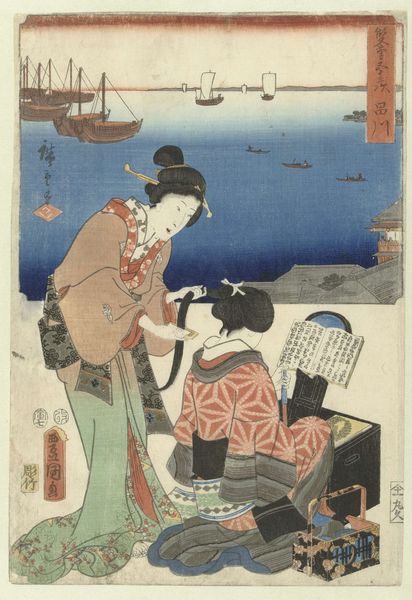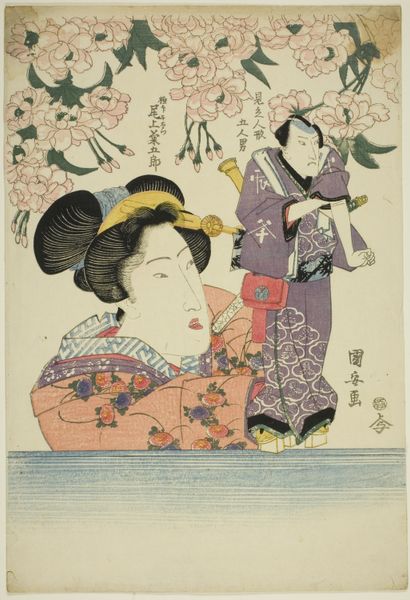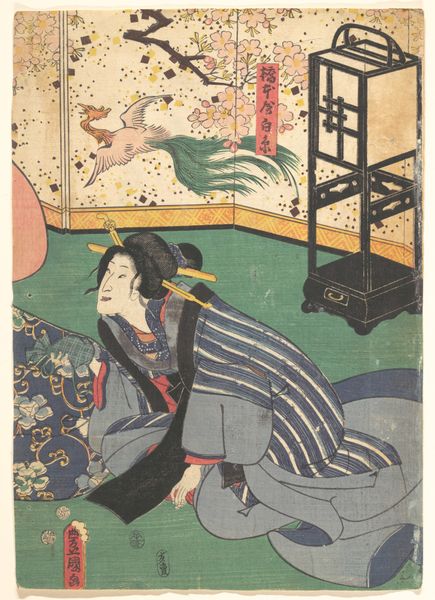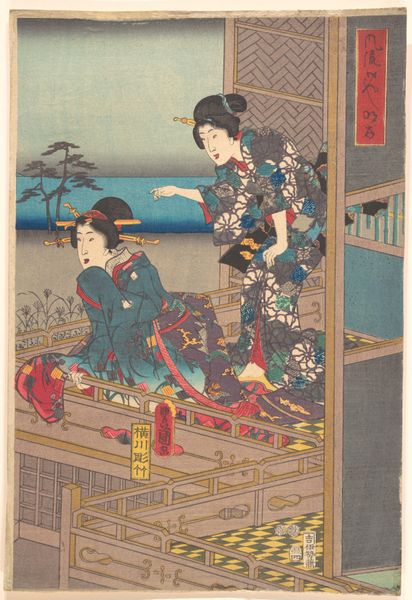
print, ink, woodblock-print
#
portrait
# print
#
landscape
#
ukiyo-e
#
ink
#
woodblock-print
#
genre-painting
Dimensions: 14 3/16 × 10 1/8 in. (36 × 25.7 cm) (image, vertical ōban)
Copyright: Public Domain
Editor: Here we have Utagawa Kunisada's "Odawara," likely from 1854-1857, a striking Ukiyo-e woodblock print. The women in the foreground draw my eye, especially how the taller one's robe almost blends into the river. How do you interpret the composition in relation to the cultural context? Curator: The immediate contrast you observe between the foreground figures and the landscape points to the heart of Ukiyo-e’s visual language. Notice the bold patterns of their robes - are they merely decorative, or do they signify status, perhaps profession, within Edo society? The landscape, seemingly a backdrop, is in fact a symbolic representation of place, of journey. How does that small detail of figures crossing the river affect your reading of it? Editor: It makes the landscape seem more active, not just a static backdrop. The people in the river give a sense of movement. Curator: Exactly! That movement, subtly incorporated, references both travel, a growing theme due to improved infrastructure at the time, but also the Buddhist concept of impermanence – the world constantly changing. Kunisada juxtaposes these temporal figures with the timelessness of the mountains, asking us to consider our place within the larger cycle. The woman standing also looks down, seemingly preoccupied by her image, reinforcing a sense of inner reflection as she observes external, historical processes. Editor: That makes me think about the contrast between their intimate moment versus the vastness of the landscape behind them, suggesting both a personal and universal scale. Curator: Precisely. Their carefully rendered garments, combined with the broader sweep of the mountains, captures something profoundly psychological about being present in that place and time. Editor: It's fascinating to see how much meaning is embedded in seemingly simple images. Thanks for opening my eyes to the depth of symbolism here! Curator: My pleasure. Paying attention to such pictorial symbolism allows us to not just see, but *read* these historical records of culture and society.
Comments
minneapolisinstituteofart almost 2 years ago
⋮
This print shows a young woman wearing a light, single-layer cotton robe, or yukata, a popular garment for summer. She is a traveler along the Tōkaidō, the most important road in Japan that connected Edo (today’s Tokyo) with Kyoto. She chats with a woman selling souvenirs after taking a bath. A bold pattern of chrysanthemums adorns this yukata. Its uneven edges are the printmaker’s visual shorthand for the tiny circles created by tie-dyeing, used to construct larger patterns.
Join the conversation
Join millions of artists and users on Artera today and experience the ultimate creative platform.

